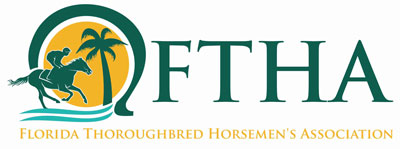August 2, 2011
By Kent H. Stirling, FHBPA Executive Director
Gulfstream had yet another good meet in 2011; maybe great when compared to what was going on at other tracks around the country. Overnight purses paid were up from $221, 540 to $271,553 or in excess of $50,013 per day over 2010, a 22.5% increase. Total average purses paid was $383, 979 up $61,613 per day over 2010’s $322, 356 or up over 19%. Starters per race increased from last year’s excellent 9.32 to an amazing 9.52 this year.
Gulfstream’s large turf course was utilized more than ever as 67 more races were run over the grass than last year’s 271. This total of 338 grass races was a Gulfstream Park record.
One might say these were nice numbers but they were all because of Gulfstream’s 858 slot machines. Then one would expect that Calder’s 1,221 slot machines would produce similar results. The reason one doesn’t see purses increase at Calder similar to Gulfstream is quite simple, Calder’s pari-mutuel handle keeps going down by double digits like most other tracks around the country. All that extra slot revenue just fills in the void resulting from the declining pari-mutuel handle.
So let’s look at Gulfstream’s 2011 pari-mutuel handle numbers. On-track wagering on Gulfstream’s live races was up 13.1%. But to be fair about it, Gulfstream ran 31 more races this year than last so if you adjust for the increased number of races run, they would still be up over 9% from last year. Wagering on other tracks was down about 6% again indicating that Gulfstream’s live racing was even better when compared to the other tracks than it was in a similar comparison last year. Total on-track wagering (live and simulcast) was over 4.6% higher than 2010. The Gulfstream simulcast signal out of state was also impressive. It’s hard to be impressive when you have had the number 1 winter simulcast signal for at least the last 11 years. This year Gulfstream’s ISW (Interstate wagering) handle was up 7.7% over last year, and when adjusted for number of races run it was still up over 3.5%.
But all the news is not cheery, wagering within the state of Florida has been significantly down the last three or four years because of the economic downturn. The Gulfstream signal was down 1.4% on Intra-track wagering and when adjusted for races run it was actually down 5.3% from 2010. The full card simulcasting or those wagers placed on out of state races sent through Gulfstream into the State of Florida was down about 25% compared to last year. That number not only reflects the economy but more so reflects Tampa Bay Downs which runs at the same time as Gulfstream selling out of state signals for a much lower fee, therefore, most Jai Alai, Harness and Dog tracks buy the out of state signals such as New York, Kentucky through Tampa and not Gulfstream.
954.457.3516 | info@floridahorsemen.org



